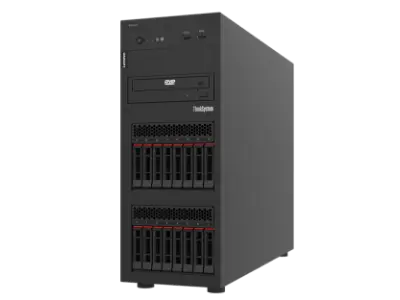 White Hat Link Building – Safe. Powerful. Long-Term.
White Hat Link Building – Safe. Powerful. Long-Term.
How Do DAS and SAN Technologies Impact Data Storage?
Written by James » Updated on: June 17th, 2025

Data storage is one of the key parts of contemporary information technologies. This simply denotes that with the generation of data, businesses and adequate storage facilities have become essential. Two of them are Direct Attached Storage (DAS) and Storage Area Network (SAN).
This article looks at the impacts of DAS and SAN on data storage concerning performance, management, access, expansion, growth potential and cost consequences.
Impact on Data Management and Accessibility
DAS (Direct Attached Storage)
DAS devices complicate the attempts to establish centralized policies for data management. The aspect of accessibility since data stored on a DAS device is only accessible by the server that is connected to it. This can hamper the performance of an organization, especially in handling large amounts of data required in interoffice sharing. Since DAS-type systems are centralized it can lead to ineffectiveness where large numbers of users require data. It becomes a hindrance to their work and can result in data replication.
SAN (Storage Area Network)
SAN is a storage solution that creates a centralized storage facility and enhances the storage and retrieval processes of data. Several servers can perform read-and-write operations on the data stored in the SAN that enhance working interaction. SANs provide extra functionalities including data copying, replication, and automated backups which add to data protection and restoration. Centralization reduces the problem of dispersal of resources and their management. Everything is done in a centralized manner to help in the reduction of administrative costs.
Impact on Scalability and Future Growth
DAS (Direct Attached Storage)
It is not easy to scale the model to accommodate a large amount of data for processing due to the many restrictions put on the structure by the model. When total capacity is required, the addition of further DAS devices grows difficult and becomes clumsy. For each device, a new connection to the server is needed. Additionally, the physical area is occupied aggravating organizational issues. This characteristic is not effective when there is an expansion of data or when applications are massive that are not favourable for DAS.
SAN (Storage Area Network)
SAN also boasts high scalability, which enables businesses to integrate more storage into an organization’s existing architecture without interruption. Capacity can also be easily expanded since new storage devices can be incorporated into the SAN structure easily. This scalability is important more so in enterprises to ensure that there is the ability to take on higher capacities as data grows. Large storage capacities can also be supported within SANs; and the architectures can be modified to incorporate new concepts in the future, making SANs a secure prospect for the future.
Impact on Performance and Efficiency
DAS (Direct Attached Storage)
DAS systems are external and connect to one or several computers or servers only. They offer a simple and dedicated storage concept. Such a direct link becomes beneficial by providing quicker and fewer delay times for localized data for applications.
The usage of DAS is considered to be hindered by the interface use including USB or SATA. It cannot accommodate large data transfers like networking does. Due to its high cost, DAS is more appropriate where the storage requirement is relatively small. Also, there is a need to access the data at a very high speed for purposes such as video editing or data processing.
SAN (Storage Area Network)
While SAN systems are the ones created for high-speed data transferring. The capacity of the data transfer is great. The advantage of using a high-speed network architecture in SANs is better access and minimal latency as compared to DAS. This makes SAN ideal for enterprising environments where massive volumes of data are processed. SAN secures the net architectural structure so that data is easily transferable between network storage devices and servers.
Impact on Cost Implications
DAS (Direct Attached Storage)
DAS is considered more economical to initiate in most cases as compared to the WANS, which makes it suitable for a company with small scales of operations. As the storage requirement rises, managing several DAS devices is not cheap. The lack of a centralized management system and the necessity to have dedicated connections for all the devices lead to certain operational cost growth in future. Due to the limitations of DAS in terms of large-scale data processing and handling, there could be indirect costs to lowered efficiency and possible data mismanagement.
SAN (Storage Area Network)
SAN solutions are expensive at the beginning because of the extended structures and the highly developed components provided. The long-term aspect of having centralized management for CPUs and better efficiency will eventually lead to cost savings. SANs lessen the necessity to invest in many systems for storing data and cut operating costs. The efficiency of growing capacity and future data scalability means that investing in the adoption of SAN pays off. This is because large enterprises have the potential to grow in data usage in the future.
Conclusion
The DAS and SAN have separate characteristics that shape the nature of data storage in a way that influences performance, availability, flexibility, and expense. DAS is quite simple and cheap for deployment in small-scale networks. However, it is quite unpopular due to its inability to scale up and manage large amounts of data.
SAN offers higher performance, better management and high scalability. Also, it is more suitable for organizations that have growing data requirements to support their high-competition application needs. The specific effects of every technology can be reviewed and a decision would be made depending on the organization’s needs in data storage and their future developments.
Note: IndiBlogHub features both user-submitted and editorial content. We do not verify third-party contributions. Read our Disclaimer and Privacy Policyfor details.
Copyright © 2019-2025 IndiBlogHub.com. All rights reserved. Hosted on DigitalOcean for fast, reliable performance.











